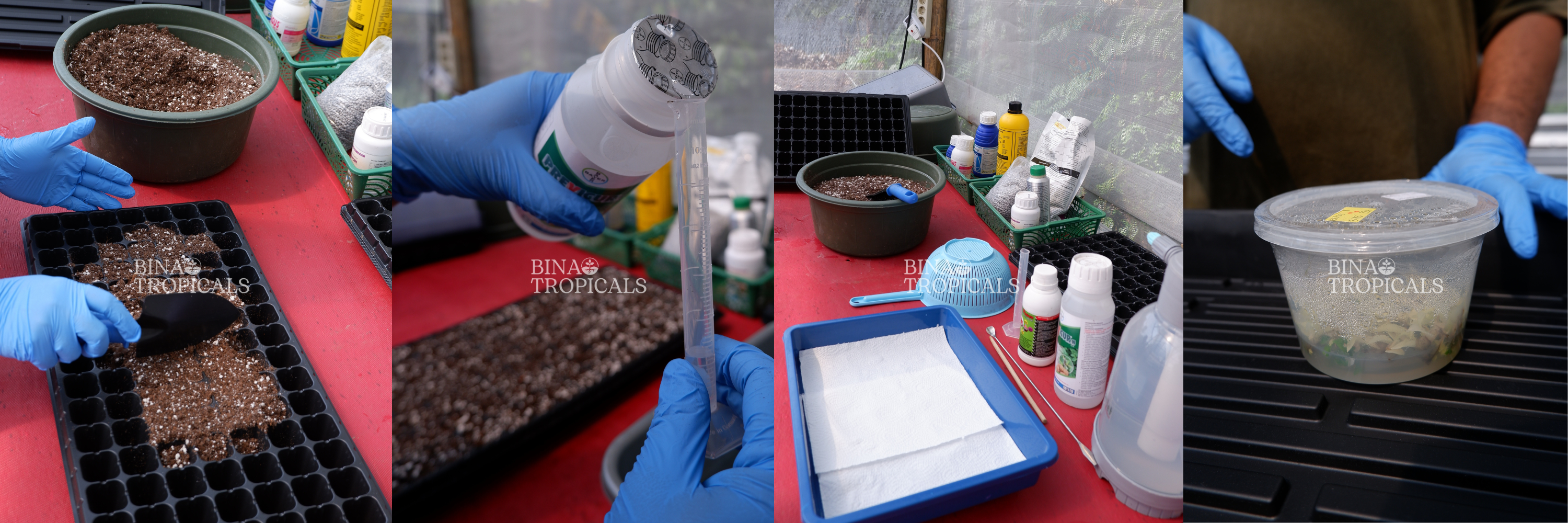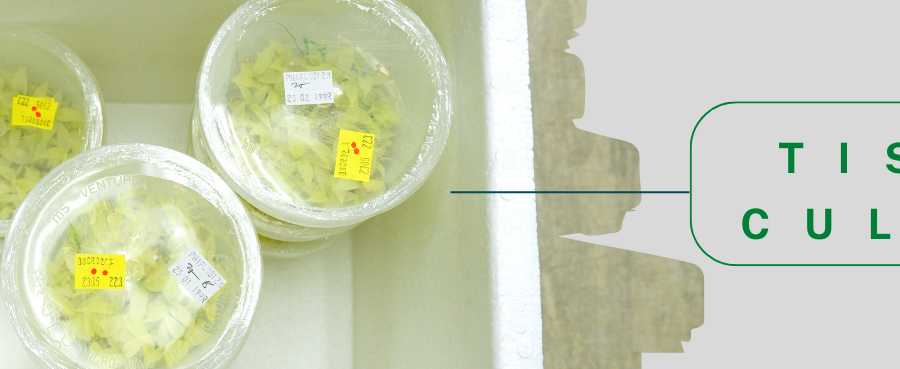What is acclimatization?
Acclimatization simply means the adaptation of plantlets to a new environment. When you transfer these plantlets from the laboratory conditions to the soil, you expose them to different abiotic and biotic stresses. Hence, you need to develop a stepwise acclimatization protocol for your plants to adapt to the natural environment.
When growing plants in labs, it is necessary to carry out the acclimatization process very carefully. If the rate of acclimatization is quick or abrupt, then there could be issues for the plant in terms of its growth and survival rate. Therefore, it is important to ensure that each plant is given time to adapt itself to the environmental conditions outside its poly-bag and grow on well. This occurs as a result of good quality soil and media used during acclimatization stage.
Tissue culture is a powerful process that can significantly increase the productivity of plants. But what happens when these babies have to go out in the natural world to grow! When the plantlets are transferred from the controlled, regulated, aseptic environment to natural conditions, they will wither without proper care
This article discusses the concept of acclimatization and how it should be done. This is a must-know element of tissue culture that you should certainly not miss. So, let’s begin!
Why we need a stepwise process for acclimatization?
A stepwise process is needed for tissue culture acclimatization because it avoids stress to the plant, and helps the plant recover more quickly from being disturbed. To keep your plantlets healthy and growing in the culture vessel,
- create a low-light and high-humidity environment.
- maintain strict aseptic conditions so that any disease isn’t introduced into your plants
- We also add a nutrient medium with high sugar content to maximize growth rates in the short term.
How can we acclimatize our plants ?
Let’s discuss the measures you can take to acclimatize your plantlets. Also, what factors do you need to keep in mind to ensure the survival of plantlets?
a. Preparation for acclimatize process
Click here for watching video about preparation
- Receive plantlets from the lab, check the code and number plantlets according to the delivery date.
- For in-agar shipment, keep the plantlets for 4 – 7 days for hardening at the nursery before planting (plantlets are still in the cup/jar)
- Prepare planting medium according to the plantlets varieties and container (pot tray)
- Prepare the materials needed for planting, including:
- Prepare water in a container and filters to washing media agar attached to the plantlets,
- Prepare the container and filters for systemic fungicide solution,
- Prepare a container lined with tissue paper to place the plantlets before planting,
- Prepare a systemic fungicide solution at a doses of 1 mL/Liter or depends on the requirement
- Prepare a spatula to remove the plantlets from the cup/jar,
- Prepare a hand sprayer filled with water,
- Prepare tweezers for planting,
- Prepare root growth hormone for unrooted plantlets,
- Prepare label.
b. Transplanting for acclimatize process
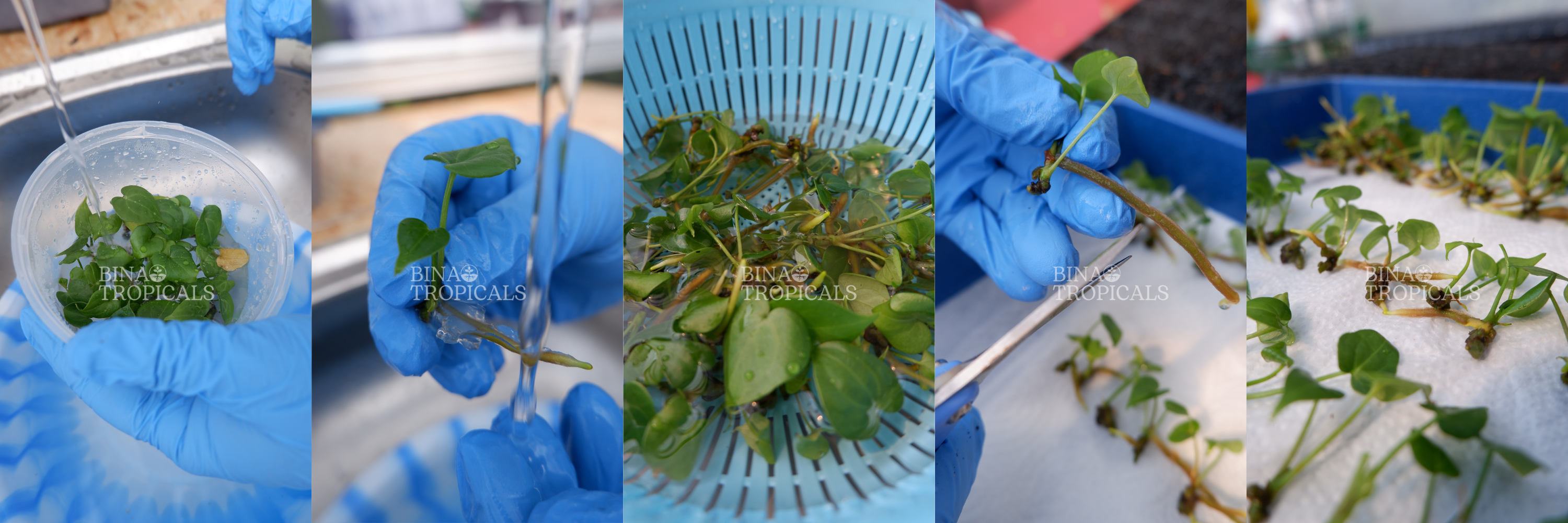
- Click here for watching transplanting TC Acclimatization Philodendron Florida Ghost
- Click here for watching transplanting TC Acclimatization Anthurium Clarinervium x Pterodactyl
- Before the plantlets are removed, first, fill the cup/jar with water to easily separate the media from the cup/jar. Use a spatula to separate the plantlets and media agar from the cup/jar.
- Put the plantlets in a container that has been filled with water. Separate the plantlets one by one from the medium and wash them thoroughly. Do it carefully so that the plantlets are not damaged by washing.
- After washing, put the plantlets into a container containing a fungicide solution about 1 minute, then drain its,
- Place the drained plantlets in a container lined with tissue paper before planting and grouped according to the size and condition of the plantlets. Cover them again with moistened tissue paper.
- Hold the plantlets to be planted at the callus or the stem base using tweezers. Dip the unrooted plantlets into the rooting hormone.
- Plant the plantlets carefully
- To keep the plantlets and media moist, spray water on the plantlets using hand sprayer while planting
- After planting, place the plantlets into the acclimatization room
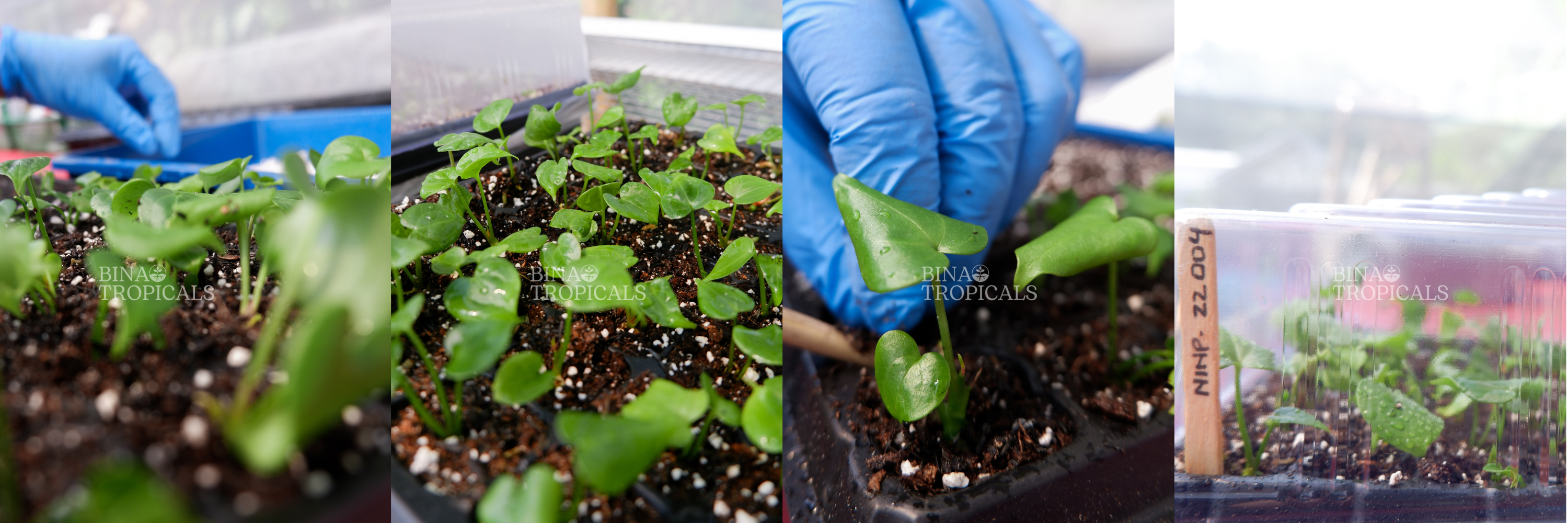
c. Acclimatization Using tunnel/hood system
- At the first ten days, monitor the humidity in 60% – 80%. If it’s too high, open the tunnel cover to decrease the moisture. After the humidity gets into the range, the lid (tunnel cover) can be closed again.
- Add shade net to the tunnel (cover the tunnel surface) for 5 – 10 days after deflasking.
- At the second 10 days, open the lid (tunnel cover) on both sides of the bottom by rolling about 10 cm at 3.30 pm and close the lid at 08.00 am. Do this method about four days. The next step, open the lid (tunnel cover) at 03.00 pm and closed the lid at 09.00 am. Do this for about six days.
- After about 20 days, fully open the tunnel cover (when the weather is hot, the seedlings can be covered with a net shade). Do this method about 10 – 14 days depending on the conditions and the type of plant.
- Let the seedlings harden naturally.
The First two weeks
For 1-3 weeks, the plants need to be kept in the high humidity of about 60-80% (in which they were cultured) and with minimum light. You can do it by covering the plants with transparent plastic bags and make some small holes in them for air exchange and keep them in shade. The shade also protects plants from direct exposure to solar light, which can lead to ultimate water loss from plants.
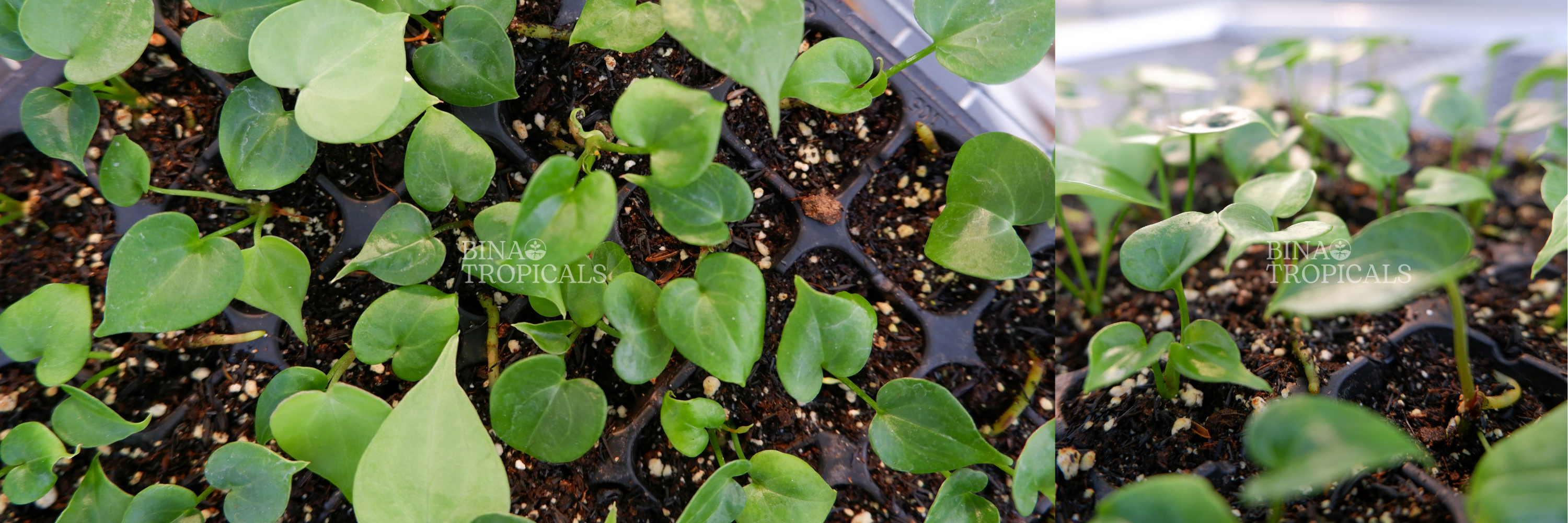
The first shock that the platlets will get is the change in media from organic nutrient to inorganic nutrient. But, this will activate the photosynthetic machinery of plants and prepare them to withstand low humidity. Today, computer-controlled rooms are also created that maintain high humidity for plants with enough light and CO2 for photosynthesis at the same time.
The other way to increase the survival and growth rate of plants at the acclimatization stage is by providing an environment to plantlets, at the multiplication and rooting stage, similar to the greenhouse environment.
More Information
We would love to hear your feedback and suggestions. Let’s connect with us, you will get more benefits. Thank you for your kindness and support
- website www.binatropicals.com
- Telp/ WA +62 851-7222-2420 click here
- DM on @binatropicals
Reference
- Tissue Culture Lab Bina Tropicals
- labassociates.com
- plantcelltechnology.com

